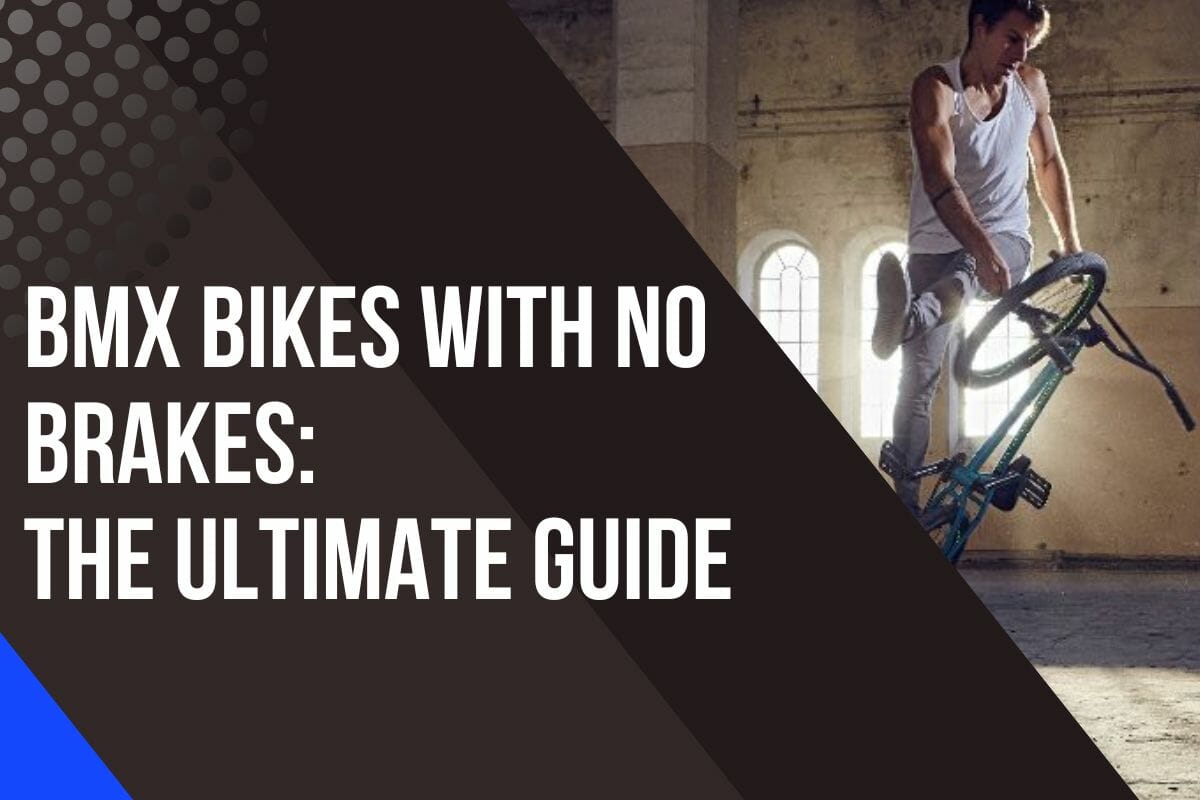21-Speed Bike Gears Explained: Benefits and Shifting Techniques

Are you confused about the different gears on your bike? Do you find yourself shifting randomly and hoping for the best? Don’t worry, you’re not alone!
Understanding how to use your bike’s gears can make a huge difference in your cycling experience.
Here we’ll break down the basics of 21-speed bike gears and explain how to use them effectively.
By the end, you’ll have the confidence to tackle any terrain and make the most of your ride.
The Meaning of 21-Speed
When a bike is labeled as having 21 speeds, it means that the bike has a drivetrain with 21 different gear combinations that can be achieved by using the shifters.
This allows the rider to choose the right gear for different terrains, slopes, or wind conditions, making riding more efficient and enjoyable.
Here are some benefits of having 21 speeds on a bike:
Components of a 21-Speed Bike
A 21-speed bike is a versatile machine that allows riders to tackle different types of terrain with ease.
The key components of a 21-speed bike are the derailleur, cassette, chain, shifters, and crankset.
Derailleur
The derailleur is a mechanism that moves the chain from one sprocket to another on the rear wheel. It consists of two main parts: the rear derailleur and the front derailleur.
The rear derailleur shifts the chain between the different sprockets on the rear wheel, while the front derailleur shifts the chain between the different chainrings on the crankset.
Both derailleurs work in tandem to provide a wide range of gearing options.

Cassette
The cassette is a set of sprockets on the rear wheel that the chain runs over. The cassette usually contains between 7 and 11 sprockets, arranged in a row from smallest to largest.
The size of the sprockets varies, with the smaller ones providing easier gears and the larger ones providing harder gears.
By shifting the chain from one sprocket to another using the derailleur, the rider can adjust the gear ratio to match the terrain.

Chain
The chain is a vital component that connects the pedal cranks to the cassette on the rear wheel. The chain is responsible for transferring your pedaling power from the cranks to the rear wheel.
It’s important to keep the chain well-lubricated and free from dirt and debris to ensure smooth shifting and efficient power transfer.

Shifters
The shifters control the derailleur and allow the rider to shift gears while riding. Most 21-speed bikes use trigger shifters, which are mounted on the handlebars and operate with the rider’s fingers.
Trigger shifters usually have two buttons, one for shifting up and one for shifting down. You can easily shift gears while riding without having to take your hands off the handlebars.

Crankset
Lastly, the crankset is the set of gears that attach to the pedals. A typical 21-speed bike will have three chainrings on the crankset, with the smaller one for easier gears and the larger one for harder gears.
You can switch between these chainrings using the front derailleur, which allows for even more gear ratio options.

How do 21-speed Bike Gears Differ from Others?
When it comes to bike gear, the 21-speed bike gear system is one of the most popular choices for riders.
The number of gears, gearing system used, and weight of the bike are key factors that set 21-speed bike gears apart from other types of bike gears.
Number of Gears
Compared to single-speed or 7-speed bike gears, the 21-speed bike gear system has a wider range of gears for riders to choose from.
This means that riders can customize their gear ratio to suit different terrains and riding styles. The gearing system used in a 21-speed bike typically consists of a combination of triple chainrings on the front crankset and a cassette on the rear wheel.
This allows for a greater range of gear options compared to other types of bike gear.
Weight
However, the downside to this wider range of gears is that the bike may be heavier due to the additional components required to achieve the 21-speed system.
Therefore, riders concerned with the weight of their bike may find that a single-speed or 7-speed bike gear system would be a better fit for them.
Gear System
Within the 21-speed bike gear system, there are different types of gear available, including traditional, cassette, and single options.
The traditional gear system features a freewheel that screws onto the rear hub and is compatible with older bike models.
However, this system is slowly being replaced by the cassette system, which offers more gear options and smoother shifting.
The cassette system uses a cassette that slides onto the rear hub, and the individual sprockets can be replaced, allowing for greater customization.
Finally, the single-gear system, as the name suggests, only has one chainring on the front crankset and a single rear sprocket.
This system offers simplicity and ease of maintenance but may not offer a wide enough gear range for some riders.
Is It Better to Have More Gears on a Bike?

My childhood bike only had 10 gears and it served me just fine. Nowadays, some bikes come with a whopping 21 gears, but do we really need all of them?
Here’s the thing, with fewer gears you end up using all the ones available, and each gear offers a slightly different cadence.
Also, having more gears in the rear cassette is almost always unnecessary. However, if you’re a fan of finer changes while climbing steep hills or riding on flat terrain, then having access to more cogs can be beneficial.
But let’s be real, most of us don’t need more than 18 or 20 rear cogs. In fact, an 8-speed inter-6 hub is more than enough for a single-gear setup.
So, don’t get too caught up in fancy gearing systems. Choose what works best for you and your riding preferences. After all, riding should be about enjoying the journey, not just the gear you’re using.
How to Change Gears on a 21-Speed Bike
If you’re new to riding a 21-speed bike, it’s important to understand how to change gears.
Changing gears can help you tackle different types of terrain and make riding a lot more comfortable.
With three front gears and seven rear gears, you have plenty of options to adjust your bike’s performance to your needs.
The left gear shifter is in charge of the front gears, whereas the right gear shifter controls the rear gears. Remember, the front gears are for significant gear changes, while the rear gears are for minor adjustments.
If you want to shift to a lower gear, use the left gear shifter to move the chain to the smallest front chainring. This gear is perfect for slow-speed riding or climbing.
If you desire a higher gear, use the left gear shifter to move the chain to the largest front chainring. This gear comes in handy for fast road riding or large hills.
To fine-tune your gear ratio, utilize the right gear shifter to move through the seven rear gears. But be cautious! Avoid using the small chainring with the smallest cogs in the cassette, or the large chainring with the largest cogs.
Before using gears 1-4 on the rear cassette, always shift the front back to the middle chainring.
When Should You Shift Gears on a Bicycle?
A lower gear will make it easier to pedal and maintain your momentum.
If you wait too long to shift gears, you may find yourself in a gear that is too high, making it challenging to pedal up the hill.
Different types of terrain require different gear setups.
Below I briefly summarize some scenarios when you should shift your gears.
If you’re starting from a stop, shift into low gear to get going easily.
When you approach an uphill, you’ll need to shift to an easier gear combination. This will make it easier for you to pedal up the hill without putting too much strain on your knees.
To shift to an easier gear, use your left shifter to move the chain to a larger chainring in the front and use your right shifter to move the chain to a smaller sprocket in the rear.
On flat roads, use a middle gear combination. This will provide a comfortable middle ground for pedaling without putting too much strain on your legs.
To use a middle gear, keep the chain on the middle or smallest chainring in the front and move the chain to a middle or larger sprocket in the rear.
When you approach a downhill, you’ll need to shift to a harder gear combination. This will allow you to coast down the hill without needing to pedal too much.
To shift to a harder gear, use your left shifter to move the chain to a smaller chainring in the front and use your right shifter to move the chain to a larger sprocket in the rear.
Shift into a lower gear to make it easier to pedal against the wind.
Shift into higher gear when you’re going fast to maintain your speed without pedaling too fast.
Shift into a lower gear when you’re tired to make it easier to pedal.
Remember, the key is to shift gears before you need to, rather than waiting until you’re already struggling. This will help you maintain a steady pace and avoid putting too much strain on your muscles.
What is The Recommended Gear for Uphill Cycling on a 21-Speed Bike?

The recommended gear for uphill cycling on a 21-speed is to use a lower gear to maintain a comfortable cadence and prevent excessive strain on your muscles.
Low gear is achieved by using the left gear shifter to move the chain to the smallest of the front chainrings. This will give you more leverage to pedal and make it easier to climb uphill.
For steeper climbs, it’s best to shift to the lowest gear (gear 1) by moving the chain to the smallest front chain ring and the largest cog in the rear cassette.
This will create the lowest gear ratio possible and give you the most power to pedal up the hill.
Using low gear for uphill climbing offers several benefits.
What Gear is Recommended for Riding on Flat Terrain or Going Downhill on a 21-Speed Bike?

When riding on flat terrain or going downhill on a 21-speed bike, it is recommended to use higher gears to maintain a faster speed and reduce the strain on your legs.
The exact gear selection will depend on factors such as your fitness level and the terrain conditions.
I usually go for the highest gear that I can pedal comfortably, aiming for a speedy 90 RPMs.
To really kick things up a notch, try using the big chainring and a middle cog in the back – this will give you some serious zip.
But don’t forget to switch back to the middle range of gears for a nice, easy ride.
However, there may be instances where high gear is not necessary or appropriate.
In these cases, you can shift to a low gear by using the left gear shifter to move the chain across to the smallest chain ring at the front, followed by changing the gear to the largest cog in the rear cassette using the right gear shifter.
This will create the easiest gear at the top of the cassette, which is great for climbing hills or slow-speed riding.
It’s important to change gears one at a time to prevent the chain from becoming stuck or coming off the cogs. Always be aware of the terrain ahead and plan ahead to shift gears accordingly.
Why Cross-Chaining is Dangerous and How to Prevent It
Cross-chaining is a common issue that arises when the chain is at an extreme angle.
It occurs when the chain is on the largest chainring on the front derailleur and the biggest sprocket on the rear cassette or the smallest chainring on the front derailleur and the smallest sprocket on the rear cassette.
This creates a diagonal line that causes the chain to rub against the front derailleur cage or the rear derailleur.
Cross-chaining is dangerous because it puts excessive stress and strain on the chain and the drivetrain, leading to premature wear and damage.
It can also cause poor shifting and decrease the efficiency of your pedaling.
The stress and damage to the chain and drivetrain can be costly to repair and may require the replacement of multiple parts.
To avoid cross-chaining, you must use the appropriate gear combinations.
A good rule of thumb is to use the big chainring on the front derailleur and the middle sprocket on the rear cassette for flat terrain and the small chainring on the front derailleur and the largest sprocket on the rear cassette for uphill climbs.
It’s recommended to use only one or two gears at a time to prevent cross-chaining and protect the chain and drivetrain.
Different bike manufacturers and models may have varying gear ratios and combinations, so make sure to read the user manual or consult a bike mechanic to determine the appropriate gear combinations for your bike.
21-Speed Bike Gear Maintenance Tips
Maintaining and repairing your bike gears is essential for their longevity and smooth operation.
Below are some tips to keep your gears in good shape:
Tips for Mastering 21-speed Bike Gears
To wrap this up, here are some tips for properly using 21-speed bike gears.





